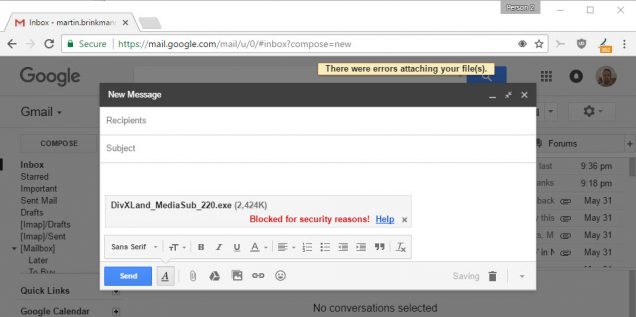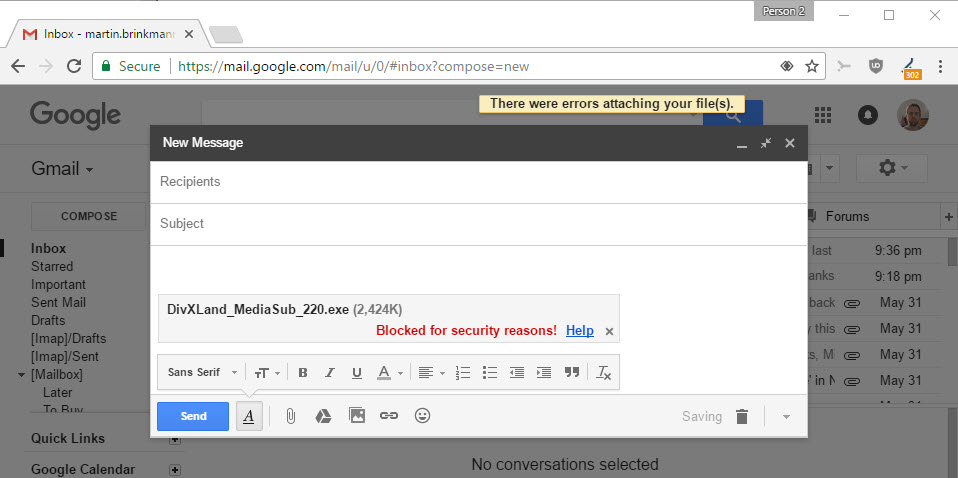Google has announced a new set of features for Gmail account security. Three new options are intended for Google Suite users, while the fourth one is immediately available to all Gmail users. Let’s start from the latter: Gmail users, both from the web and from applications, will now be more protected by attachments containing potential threats. Google said:
We now correlate spam signals with attachment and sender heuristics, to predict messages containing new and unseen malware variants. In addition, we block the use of file types that carry a high potential for security risks including executable and JavaScript files.
In a nutshell, Gmail is now able to associate some signals and, according to these, predicts if an attachment contains malicious code. From now on, the updated list of files that can no longer be sent or received via Gmail is as follows:
- .JS,
- .ADE,
- .ADP,
- .BAT,
- .CHM,
- .CMD,
- .COM,
- .CPL,
- .EXE,
- .HTA,
- .INS,
- .ISP,
- .JAR,
- .JSE,
- .LIB,
- .LNK,
- .MDE,
- .MSC,
- .MSI,
- .MSP,
- .MST,
- .NSH,
- .PIF,
- .SCR,
- .SCT,
- .SHB,
- .SYS,
- .VB,
- .VBE,
- .VBS,
- .VXD,
- .WSC,
- .WSF,
- .WSH
These files are blocked even if they are contained in password-protected folders. Whoever is in need of sending a file of these must use Google Drive (uploading it to their account and then providing the recipient with the link for downloading it) or sending it via other email services.
As for G Suite’s new features, Google announced:
- Delayed delivery of e-mail messages with suspicious content – Google has developed a new algorithm that “flags and delay delivery of potentially suspicious messages” on Gmail. Google performs additional checks on these messages before delivery.
- Unintended external reply warning – Gmail verifies that the recipient is in your contacts list or someone you’re aware of. If not, you will be notified.
- Anti-phishing checks on Android – An alert is shown on Android if you activate a link that Google considers “suspect.”
All features are enabled by default and will be spread over the next few days.


